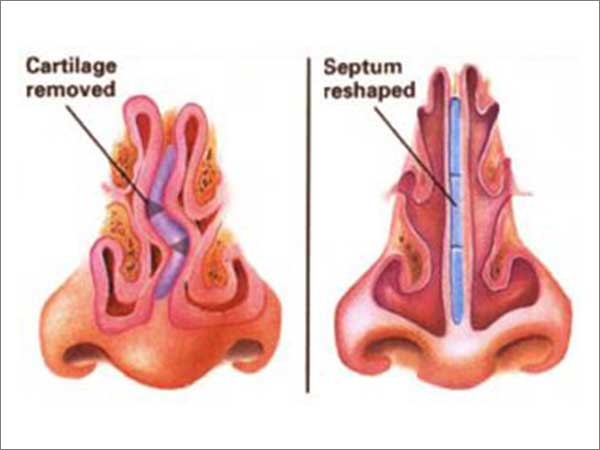Turbinectomy & Septoplasty

Turbinectomy & Septoplasty: Understanding Nasal Surgeries
What are they?
- Turbinectomy: Surgery to address enlarged nasal tissues.
- Septoplasty: Surgery to correct a deviated or crooked septum.
- These procedures aim to:
- Improve breathing.
- Control nosebleeds.
- Relieve sinus headaches.
- Promote sinus cavity drainage.
Why do we need them?
- Turbinates: Filter and humidify air before it enters the lungs, regulate airflow, and keep the nose moist.
- Septum: Bony cartilage wall in the midline of the nose, supports and guides airflow. A deviated septum can hinder breathing and drainage, leading to sinus infections.
- Symptoms include nose block, nosebleeds, facial pain, headache, post-nasal drip, loud breathing, and snoring during sleep.
Procedure:
- Usually performed under general anesthesia, takes about 30 minutes.
- Procedures involved may include:
- Diathermy: Electric current passed through a needle to heat and destroy tissue.
- Trimming: Removing part of the turbinate, including bone, and covering exposed areas with tissue.
Post-Procedure:
- Patients may experience:
- Swelling of the nose, eyes, cheeks, or upper lip.
- Discomfort and numbness in the nose tip, gums, or upper lip.
- Blood-stained fluid for up to two weeks.
- Recommendations for patients:
- Avoid strenuous activities, hard chewing, and non-steroidal anti-inflammatory drugs.
- Soft diet as tolerated.
- Avoid straining during bowel movements or exercise.
- Follow instructions on nasal packing, irrigation, and post-operative care.
- Contact the surgeon immediately for increased bleeding, fever, pain, or swelling.
Complications:
- Numbness of facial structures.
- Return of blocked nose symptoms.
- Septal perforation.
- Chronic nasal drainage.
- Change in sense of smell or taste.
